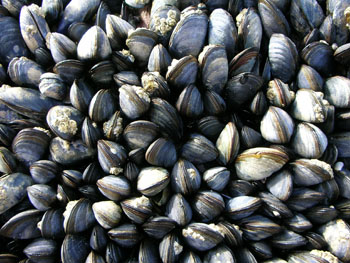Product Description
Didier Gardillou Trompe L’Oeil Porcelaine “Plat des moules et serviette” c. 2008


DIDIER GARDILLOU France
Trompe L’Oeil Porcelain “Plat des moules et serviette” c. 2008
High fired porcelain with a matte and shiny glaze, blue border detail on the napkin and realistically painted mussels.
Marks: DG (Didier Gardillou) monogram
H: 4 1/2″ x D: 10″ x W: 11″
Price: $5,450
Didier Gardillou is a master porcelain artist who creates Trompe L’Oeil masterpieces. He revived the antique craft of the porcelain florist. This technique and style first appeared in France in the 1740’s at the Manufactory of Vincennes, which in time would move and become known as the Royal Manufactory of Sèvres Porcelain.
Didier Gardillou Trompe L’Oeil Porcelaine “Plat des moules et serviette” c. 2008
ANE CHRISTENSEN (b.1972) born in Copenhagen, Denmark/ based in London, UK
Bowl 1999
Sterling silver
Marks: AKC, 925, Z, British hallmarks
H: 2 ½” x L: 12”
Price: $5,950
The starting point for all of metalworker Ane Christensen’s tableware is a single sheet of metal. Her aim is to develop a three dimensional object from a flat sheet without adding or removing any elements. Japanese paper packaging influences Ane’s work, but a more important influence is the half finished or half demolished structures of building sites that she says can hold unexpected sculptural qualities.
Ane graduated from the Royal College of Art and has since been involved in exhibitions in London, Denmark and Copenhagen, including more recently at Collect, V&A.
Ane makes pieces in a variety of metals including silver, stainless steel and powder coated copper.
Neil Lane Couture, large rectangular step-cut natural gem Peridot (18.12 carats, dimensions 18.55mm x 14.85mm x 7.90mm, GIA certificate) in an elaborate 18k gold “Egyptian” motif mounting set with 158 full, round-cut small diamonds (approx. 1.58 carats TW) and signed by Neil Lane, c. 2008
